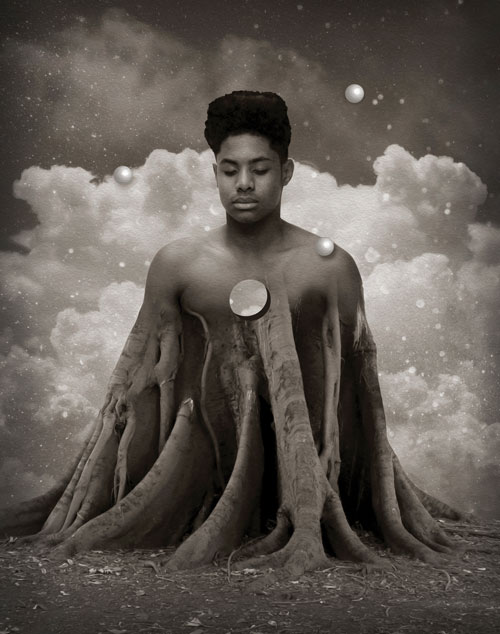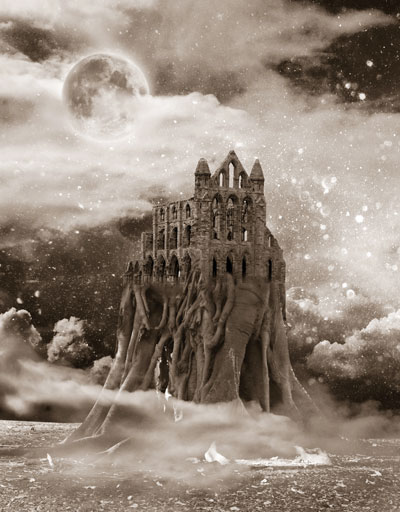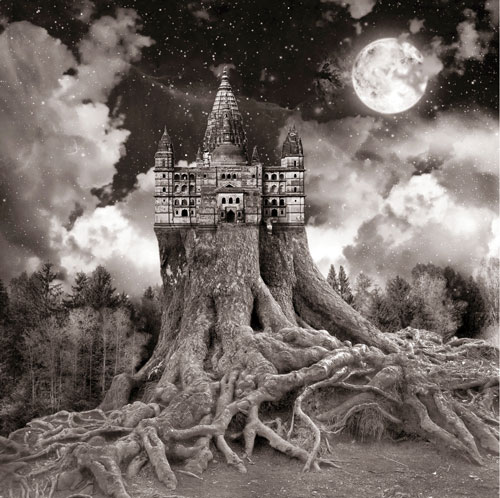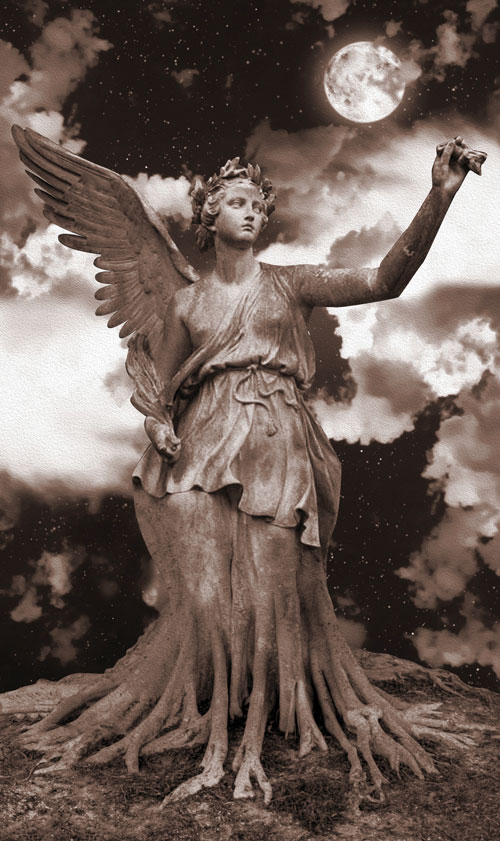 |
 |
| Top: Jaiden M. Bottom: LaJanae G. |
Identifying Surrealist Artworks
To ease students into the world of Surrealism, I divide the class into four groups. I hand each group a worksheet that contains a different unidentified piece of Surrealist artwork. Each group is asked to come up with six words to describe the piece and discuss the possible message or meaning of the work. Lastly, they decide which art movement the work belongs to. When they are finished, we come together to share, and I reveal each artist’s name, the year the artwork was created, and its intended meaning.
The ensuing conversation can be met with skepticism, rejection, and sometimes plain hilarity. I realized through this exercise that Surrealism can be overwhelming for highschool students. It’s a time when they’re discovering who they are, so Surrealist works can be a mirror of sorts, which for some of my students can be either comforting or a source of unfamiliar reflection.
Surrealist Artists
Next, I share a presentation introducing students to the precursors and contributors that lead to the birth of Surrealism, such as Sigmund Freud. I share the personal lives as well as the work of artists Salvador Dalí, René Magritte, Frida Kahlo, Max Ernst, Dorothea Tanning, Remedios Varo, Yves Tanguy, and Man Ray. I noticed that sharing the details of artists’ personal lives helps make them less abstract to students and more relatable.
The Surrealists’ personal lives are full of stories that grab students’ attention. Personally, I’m partial to Frida Kahlo’s story. We don’t often think about artists having disabilities, but discussing Frida’s physical hardships, in addition to her personal journey, opens a door to a whole other conversation that has had a profoundly positive effect on students.
Jerry Uelsmann
Our discussions lay the groundwork for Jerry Uelsmann. At 85 years old, Uelsmann is still regarded as the premiere expert of twentieth-century photomontage in America. His work in darkroom effects foreshadowed the use of Photoshop to make surrealistic images, a process led by his ex-wife, Maggie Taylor.
I share a written interview by Mark Edward Harris discussing Uelsmann’s work created in the darkroom, along with his thoughts on Photoshop. I also share a YouTube video of Uelsmann working in his darkroom. I feel it’s important for students to understand that the technology they interact with has its roots in traditional art-making. The video gives students a vital point of reference and appreciation for constructing images with the aid of a computer.
At this point, I typically share Uelsmann’s photographic work ending with Untitled (House with Roots), 1982. I ask students what they think the artwork means, especially since Uelsmann doesn’t tend to offer any clues in the titles of his photographs. Their responses range from “home is where your roots are” to how the natural world will eventually succumb to human overdevelopment. Students then use this image as inspiration for their own Surrealist creations.
 |
 |
| Top: Ashton M. Bottom: Abigail S. |
Tutorials
I always provide step-by-step tutorials for my introductory classes. My tutorials usually allow for breathing room, so the technically proficient and adventurous student can take my instructions and build on them. The foundation of the project starts with a tree trunk. I allow students to use their own high-quality photographs or ones that I provide.
Image Quality
If students are using their own images, I always confirm the image quality to ensure success. This allows me to talk about the importance of image selection and acquisition. Students must also become image detectives. For a successful melding of two unlikely images, students need to look at the direction of light, contrast, saturation, and tonality of each image. All color images are converted into black-and-white to help my entry-level artists correctly identify these highly important photographic elements.
Another important step for students is to have them recognize, before they become too invested, that just because they have envisioned something in their mind doesn’t mean the result will exactly match their vision. They need to be taught to respect the artistic process and let the development of the image influence the outcome.
Blending Images
After students have isolated their tree trunk using the Pen tool, I suggest that they blend some sort of architectural structure on top of it that holds a particular meaning or message. This is where I allow for different interpretations. Some students opt for a statue or even an image of themselves.
Once the two images are seamlessly blended into what appears to be one structure using a variety of techniques, layer masks, burning/dodging, and adjustment layers, students need to consider the background. With their backgrounds complete, there are a number of additions they can make to suit their personal vision. If students feel the image looks too cold or not dreamlike enough, I show them how to add sepia toning or a gradient overlay to warm the image.
Melding digital art platforms with a particular art movement while providing many student choices is, for me, the way to go.
Kasmira Monhanty is an art teacher at Huntington High School in Huntington, New York. kasmiramohanty@gmail.com
NATIONAL STANDARD
Producing: Develop and refine artistic techniques and work for presentation.
WEB LINK
Jerry Uelsmann: uelsmann.net
View this article in the digital edition.





